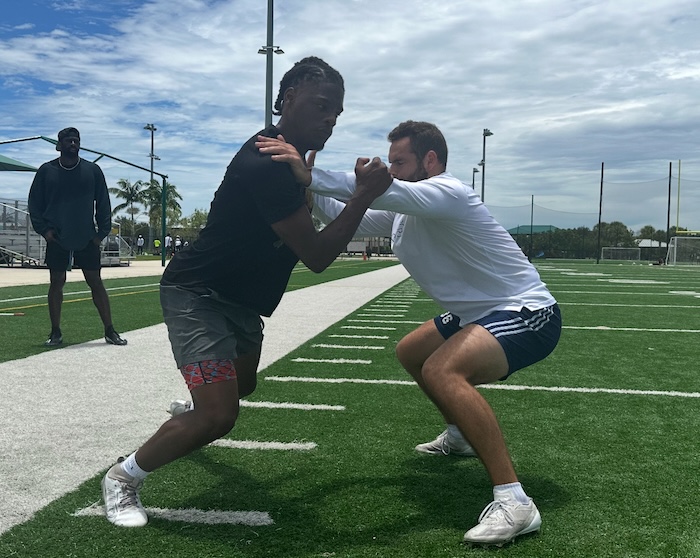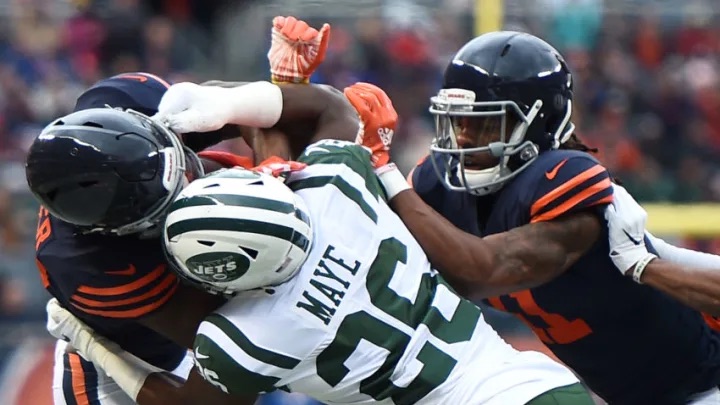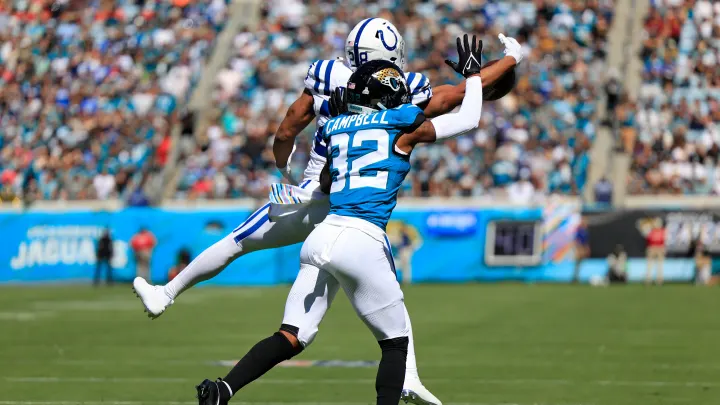When most people think of man coverage, the cornerback immediately comes to mind. Hell, we’ve even named their territory “the island.” But make no mistake — man coverage battles aren’t fought only on the edges. Safeties also play a critical role. In this article, we’ll break down safety man coverage techniques that can help DBs win their one-on-one matchups.
When offenses build game plans, after figuring out how to protect the quarterback, they look for mismatches. One of the most common mismatches in man coverage comes when safeties are forced to line up against wide receivers. And in today’s game, those receivers often include athletic tight ends who are major pass-catching threats.
With safeties being targeted more often in man coverage, it’s essential to master the right tools. Here are three key DB techniques for safeties in man coverage.
Catch Technique for Safeties in Man Coverage
The catch technique requires the defensive back to hold his ground at the snap instead of bailing backward. The goal is to disrupt the wide receiver’s release by striking him, moving him off his line, and then attaching to his hip.
While highly effective, this technique is difficult to execute. Staring down a fast receiver sprinting straight at you while you remain still can be intimidating. Inside the All Eyes DB Camp Member’s Area, I provide drills and breakdowns to help safeties and DBs master this approach.
Catch technique should only be used when the DB is aligned 4–6 yards off the receiver at the snap. Closer puts you in no man’s land, while deeper allows the receiver too much time and speed.
-
Best Coverage Fits: Cover 1 (with potential help from another defender).
-
Risky Situations: Cover 0 (except in the red zone) or Cover 4 against a slot receiver — both can be dangerous with this technique.
Scooch Technique: Man Coverage for Defensive Backs
The scooch technique involves the safety giving up a little ground at the snap while staying square. The aim is to slowly invite the wide receiver into your space, then make contact to alter his route. This is often the go-to method for DBs who struggle with the catch technique. A full tutorial is available in the All Eyes DB Camp Member’s Area.
Key detail: the staggered stance does not mean opening your hips and giving the receiver a free run. Stay square, strike when possible, and control the release. Scooch technique can be used when you are aligned at 4-8 yards off.
-
Best Coverage Fits: Cover 0, where safeties can still play semi-aggressive in an aggressive call.
-
Other Uses: Cover 1, but be ready to break quickly on slants, hitches, and quick outs.
-
Use With Caution: Cover 4 — only if you’ve truly mastered the technique, since the receiver has more space to reach max speed.
Pedal Technique in Quarters and Zero Coverage
Some call this old school, but pedal technique is a core DB skill. It involves using your backpedal and weave to maintain an over-the-top relationship with the receiver while staying square. This gives the safety the ability to break in any direction with discipline and control. Inside the All Eyes DB Camp Member’s Area, I show safeties how to refine their pedal to match modern offenses. Pedal technique is best used when you can get closer than 8 yards off of the receiver you need to cover.
-
Best Coverage Fits: Cover 0 (backpedal buys time for the rush and prevents giving up the deep ball) and Cover 4 (common when matched against a slot receiver with no help).
-
Not Ideal For: Cover 1 — since you already have help over the top, pedaling just gives the receiver extra room.
Executed well, pedal technique restricts space, alters routes, and puts you in position to play the ball instead of chasing it.
Conclusion: Stay Square, Stay Disciplined
Whether you use catch, scooch, or pedal technique, the key for safeties in man coverage is discipline. Don’t open your hips and give the receiver a free release. Stay square, apply the technique suited for the situation, and refine it through consistent reps. Over time, these tools will sharpen your ability to neutralize mismatches and cut an offense’s passing game to pieces.
Resources for Defensive Backs










